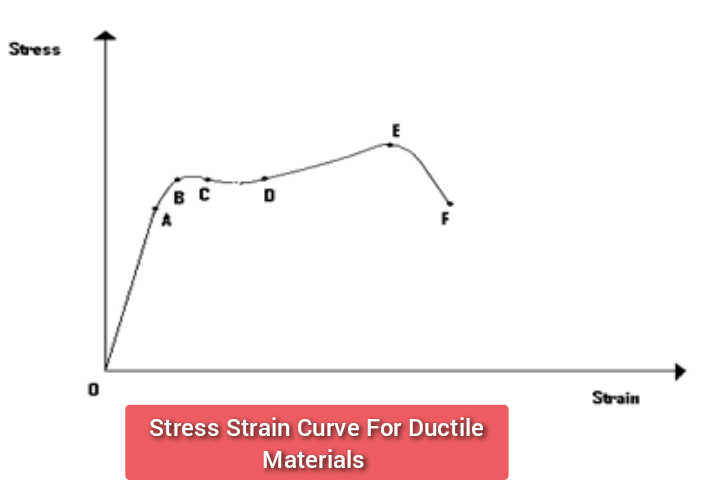Stress strain curve for ductile materials is used to study the behavior of ductile materials under applied loads.
When it comes to mechanical engineering and material science, understanding the stress-strain curve for ductile materials is essential. Ductile materials are those that can undergo significant deformation without fracturing, making them highly desirable for certain applications.
The stress-strain curve for a ductile material is a graphical representation of how the material responds to external forces.
See below the stress-strain curve for ductile materials.

The curve shows the relationship between the amount of stress applied to a material and the resulting strain or deformation that it undergoes. The curve typically begins with a linear relationship between stress and strain, which is known as the elastic region. However, beyond a certain point, the relationship becomes non-linear, indicating that the material is starting to deform permanently.
The five key points on the stress-strain curve for ductile materials are the proportional limit, elastic limit, yield point, ultimate stress, and breaking point.
The proportional limit is the point where the material obeys Hooke’s law and stress is proportional to strain.
The elastic limit is the point where the material is still elastic and can return to its original shape after the load is removed. Beyond this point, the material starts to undergo plastic deformation.
The yield point is the region where there is an appreciable increase in strain for a negligible increase in stress, and the material begins to undergo plastic deformation that is nearly permanent.
The ultimate stress is the maximum stress the material can handle before it fails.
Finally, the breaking point is the point where the material fractures.
In order to determine the behavior of ductile materials under different loading conditions, engineers use the stress-strain curve. By examining this curve, they can determine the strength, elasticity, and ductility of a given material, as well as its suitability for various applications. The curve can also be used to predict the behavior of a material under different types of stress, such as compression, tension, or torsion.
Understanding the stress-strain curve for ductile materials is crucial for anyone involved in mechanical engineering or materials science. By analyzing this curve, engineers and scientists can make informed decisions about which materials to use for specific applications, ensuring that their designs are safe, efficient, and effective.
